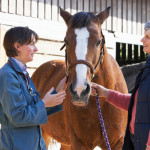Alberta is set to gradually pull its $8 million in annual funding from the University of Saskatchewan’s Western College of Veterinary Medicine (WCVM) and instead expand the vet school at the University of Calgary. The province announced Thursday it will expand enrolment for the University of Calgary’s Veterinary Medicine program (UCVM) from 130 students currently









